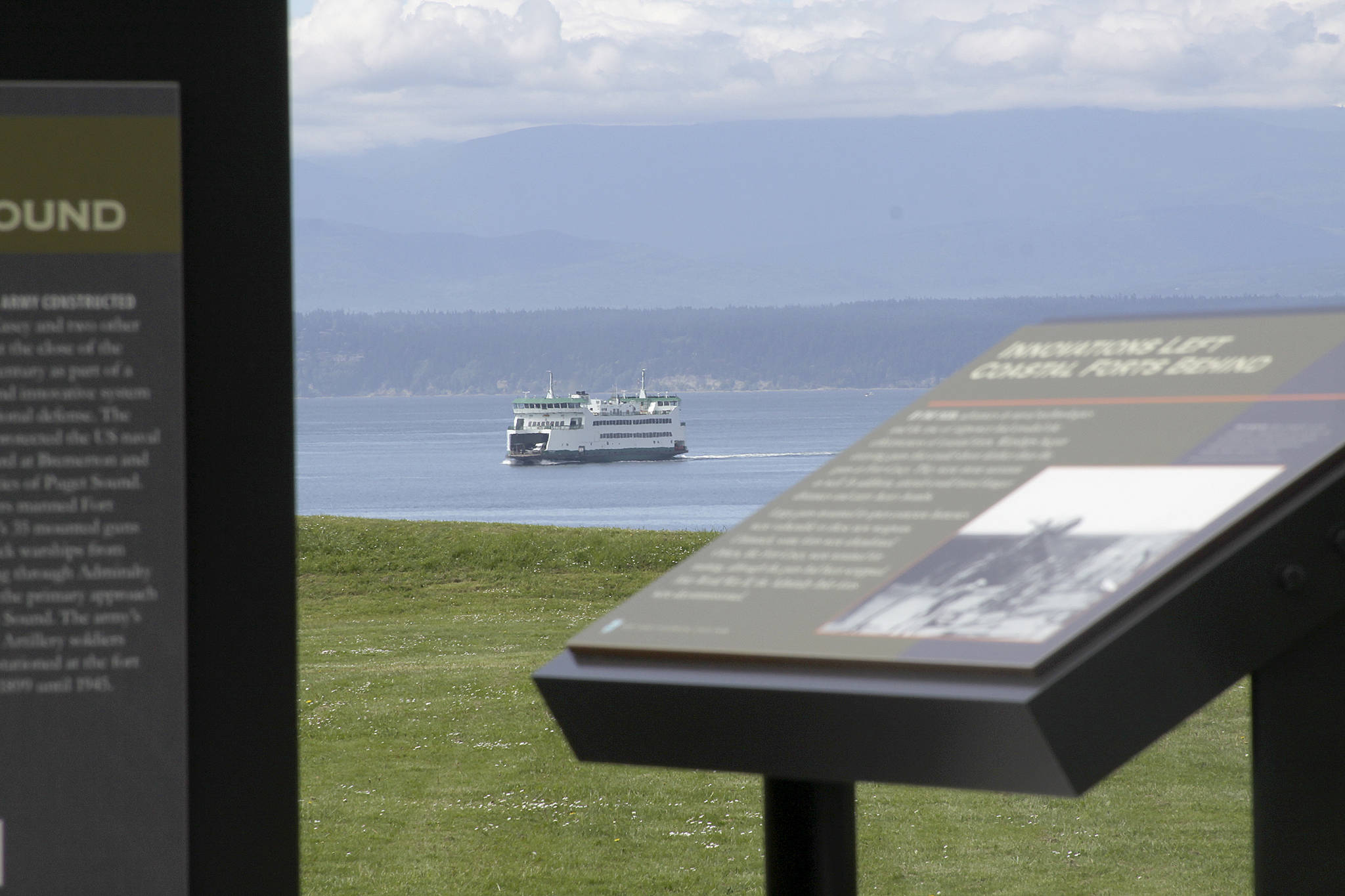If anyone can appreciate the most recent improvements at Fort Casey State Park, it’s Jon Crimmins.
Nearly 40 interpretive panels have been installed at the state park in recent months as part of a state-funded project to better tell the story of the former World War I-era Army post.
Replications of tools, gun shells, a telephone communication system, plotting boards and more add to the interpretive experience for visitors.
“I think people are going to like it,” said Jon Crimmins, who manages the state park and grew up around it.
“I spent all of my childhood playing out there not having a clue what I was playing on. That’s something I would have really appreciated.”
The “Fort Casey Preservation and Interpretive Project” has been ongoing for two years. It actually started briefly in 2004 when Washington State Parks created a coast defense interpretive plan for its parks and identified Fort Casey as its top priority because of its intact batteries and other surviving structures.
Funds ran out quickly, however, and didn’t become available again to resume the project until July of 2015, said Ryan Karlson, interpretive program manager for Washington State Parks.
“This is long awaited,” Karlson said. “We started the design back in 2004.”
“We have people working on this project who were involved back then. This is a great Washington story of our national defense system right here in Washington state. We’re really excited.”
The mission was specific.
“What we’re trying to do with the project is interpret the coast defense history of Fort Casey and its role in the coast defense of the Puget Sound,” Karlson said. “In particular, how it got there and why it got there?”
Fort Casey, Fort Worden in Port Townsend and Fort Flagler on Marrowstone Island all made up the “triangle of fire,” each armed with huge guns designed to protect the entrance to Puget Sound.
The technology was state of the art near the turn of the 20th century but was short-lived, Karlson said.
Fort Casey, with its 10-inch guns pointed toward the water, was no longer an effective part of the coast national defense system by the 1920s, he said.
“The evolution of technology is one of the main themes we have in our exhibit,” Karlson said. “The big idea that we’re trying to get across is the notion that rapid change in technology really made a significant impact on this fort in two particular areas. One is the rapid advance of technology of battle ships. They basically became heavier armored and able to withstand this type of defense system. And also the evolution of the airplane.”
Karlson said the exhibits also are designed to explain how things functioned at the old fort and why the fort was designed in such a way.
“Among the questions I got was, ‘What is this thing? Why is it here?’” Karlson said. “We are trying to address basic questions visitors have been asking for years.”
The project is expected to wrap up by the end of June.
To enter Fort Casey by vehicle, visitors must have a Discover Pass.


